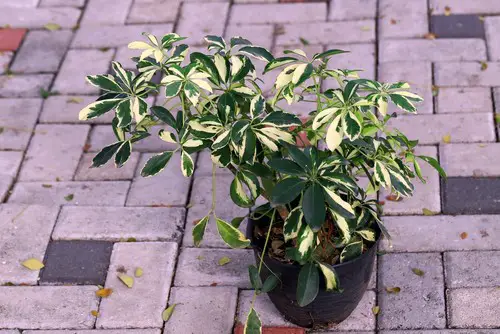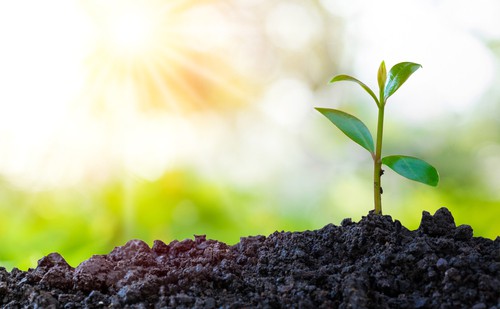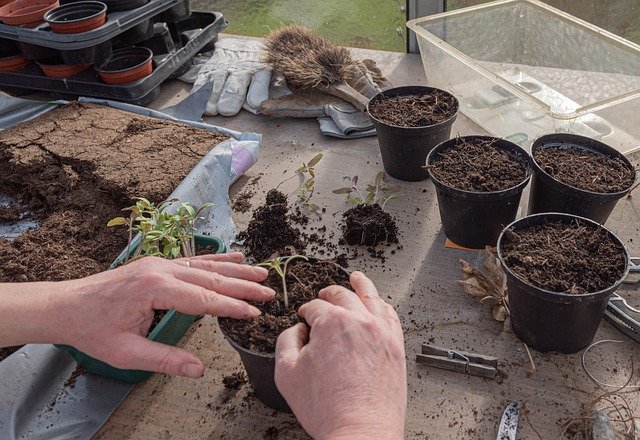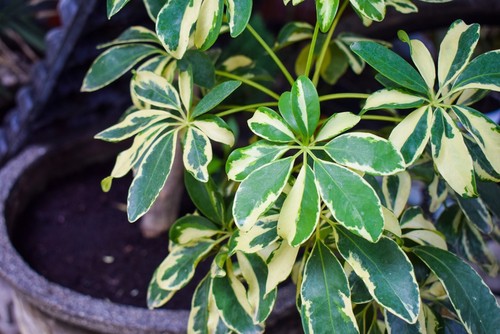Umbrella plants are a popular choice for indoor gardening enthusiasts due to their attractive foliage and ease of care. However, one common issue that many plant owners face is umbrella plant drooping leaves. When umbrella plant leaves start drooping, it can be a sign of stress and poor health.
There are several reasons why umbrella plants may develop drooping leaves. Overwatering, underwatering, low light, temperature extremes, pests, diseases, and improper feeding can all cause stress and lead to drooping leaves.
Additionally, the soil and pot play a crucial role in the plant’s health and can contribute to drooping leaves if not properly maintained.
If you notice your umbrella plant’s leaves drooping, it’s important to take action quickly to prevent further damage. With proper care and attention, most umbrella plants can recover from drooping leaves and thrive once again.
Understanding the causes of drooping leaves and taking the necessary steps to address them can help ensure your plant stays healthy and vibrant.
Key Takeaways
- Drooping leaves on an umbrella plant can be a sign of stress and poor health.
- Overwatering, underwatering, low light, temperature extremes, pests, diseases, and improper feeding can all cause drooping leaves.
- Proper soil and pot maintenance, along with prompt care and attention, can help restore an umbrella plant’s health and prevent further damage.
More on this category:
Understanding Umbrella Plants

Umbrella plants, also known as Schefflera plants, are a popular choice for houseplant enthusiasts due to their beautiful, umbrella-like leaves and ease of care. These ornamental plants are native to Taiwan and Hainan Island in southern China and can grow up to 10 feet tall in their natural habitat.
There are several varieties of umbrella plants, including the dwarf umbrella plant, which is a popular choice for indoor gardening due to its compact size. The leaves of umbrella plants can range in color from dark green to variegated, and they can be shaped like fingers or umbrellas, depending on the variety.
Umbrella plants are relatively easy to care for, making them an excellent choice for beginners. They prefer bright, indirect light and well-draining soil. Overwatering can be a common issue with these plants, so it’s essential to allow the soil to dry out between waterings.
While umbrella plants are generally hardy, they can be susceptible to pests such as spider mites and mealybugs. Regular inspection and treatment with an appropriate insecticide can help prevent infestations.
Umbrella Plant Drooping Leaves – 4 Common Problems
Umbrella plants are known for their lush green foliage and can be a great addition to any indoor or outdoor garden. However, when the leaves start to droop, it can be a sign that something is wrong with the plant. Here are some common causes of drooping leaves in umbrella plants.
1. Overwatering and Underwatering
Overwatering is a common cause of drooping leaves in umbrella plants. When the soil is too wet, it can lead to root rot, which can cause the leaves to droop. On the other hand, underwatering can also cause the leaves to droop. When the soil is too dry, the plant cannot absorb enough water, which can cause the leaves to wilt and droop.
To prevent overwatering or underwatering, it is essential to check the soil moisture level regularly. If the soil is too wet, reduce watering frequency, and make sure the pot has good drainage. If the soil is too dry, increase watering frequency, but be careful not to overwater.
2. Lighting Conditions

Lighting conditions can also affect the health of an umbrella plant. Direct sunlight can burn and scorch the leaves, causing them to droop. Low light conditions can also cause the leaves to droop, as the plant cannot photosynthesize enough to maintain healthy foliage.
To prevent drooping leaves due to lighting conditions, place the plant in bright, indirect light. Avoid placing it in direct sunlight, especially during the hottest part of the day.
3. Temperature Stress
Umbrella plants are sensitive to temperature changes and can experience stress when exposed to extreme temperatures. Cold temperatures can cause the leaves to droop, while hot temperatures can cause the leaves to wilt.
To prevent temperature stress, keep the plant in a room with a consistent temperature. Avoid placing it near drafts or in areas with extreme temperature fluctuations.
4. Pest and Diseases
Pests and diseases can also cause umbrella plant leaves to droop. Fungal infections can cause the leaves to wilt and droop, while pests like spider mites can damage the foliage, causing it to droop and eventually fall off.
To prevent pest and disease issues, keep the plant in a clean and well-ventilated area. Check the plant regularly for signs of pests or diseases and treat them promptly if detected.
By understanding the common causes of drooping leaves in umbrella plants, you can take steps to keep your plant healthy and thriving.
Regularly checking the soil moisture level, providing the right lighting conditions, maintaining a consistent temperature, and preventing pest and disease issues can help keep your umbrella plant looking its best.
The Role of Soil and Pot
When it comes to umbrella plant care, the role of soil and pot cannot be ignored. In fact, these two factors can significantly impact the health and growth of your plant. Here are some things to keep in mind:
Choosing the Right Soil
Umbrella plants prefer a well-draining soil mix that is not too heavy or compact. A good soil mix should comprise two parts peat moss to one part perlite and one part compost. This type of soil mix ensures that the soil is well-draining and retains enough moisture for the plant to thrive.
It’s important to note that the soil should never be too wet or too dry. Dry soil can cause the leaves to droop and wilt, while overly wet soil can lead to root rot and other issues. Therefore, it’s important to strike the right balance and ensure that the soil is moist but not waterlogged.
Importance of Pot Size and Drainage

The pot size and drainage mechanism are equally important when it comes to umbrella plant care. The pot should be big enough to accommodate the roots and allow for proper drainage. A pot that is too small can cause the soil to become compact, leading to poor drainage and stagnant water.
It’s also important to ensure that the pot has adequate drainage holes. Without proper drainage, excess water can accumulate in the soil, leading to root rot and other issues. Therefore, it’s recommended to use a pot with drainage holes and a saucer to catch any excess water.
When repotting, it’s important to remove any excess soil and salts that may have accumulated in the pot. This can be done by gently shaking the plant and removing any loose soil. Then, replace the old soil with fresh, well-draining soil mix.
Care Tips for Umbrella Plants
Umbrella plants are easy to care for and can thrive in most indoor environments. However, to keep them healthy and prevent drooping leaves, it is important to follow a few basic care tips.
1. Watering
Overwatering is the most common cause of umbrella plant drooping. To avoid this, make sure the soil is moist but not waterlogged. Water the plant thoroughly, but allow the soil to dry out slightly before watering again.
2. Lighting
Umbrella plants prefer bright, indirect light. Direct sunlight can scorch the leaves and cause them to droop. If your plant is not receiving enough light, it may become leggy and spindly. Consider placing it near a window with filtered light or using artificial grow lights.
3. Temperature and Humidity
Umbrella plants prefer temperatures between 60-75°F (15-24°C) and high humidity levels. If the air in your home is dry, consider using a humidifier or misting the plant regularly. Avoid placing the plant near air conditioning or heating vents, as this can cause fluctuations in temperature and humidity.
4. Fertilizing

Umbrella plants do not require frequent fertilizing. However, you can fertilize once a month during the growing season (spring and summer) with a balanced, water-soluble fertilizer. Be sure to follow the instructions on the package and avoid over-fertilizing, as this can harm the plant.
5. Pruning and Repotting
Pruning can help promote new growth and prevent the plant from becoming too large. To prune, simply cut back any overgrown stems or branches. Repotting should be done every 2-3 years or when the plant has outgrown its current pot. Use a well-draining potting mix and add coarse sand to improve drainage.
By following these care tips, you can help your umbrella plant thrive and prevent drooping leaves. Remember to monitor the plant regularly and adjust care as needed.
Recovering a Drooping Umbrella Plant
If you have noticed your umbrella plant drooping, don’t worry, there are several steps you can take to help it recover. Umbrella plants are relatively hardy, and with a little care, they can bounce back and thrive. In this section, we will discuss some of the most common causes of umbrella plant drooping and how to address them.
1. Addressing Watering Issues
Overwatering is one of the most common reasons for umbrella plant drooping. If you suspect that your plant is overwatered, inspect the soil. If it feels wet or damp, then it’s likely that the plant is getting too much water.
To fix this, allow the soil to dry out before watering again. You can also adjust the watering schedule to water the plant less frequently.
On the other hand, if the soil feels dry and the leaves are wilting, then the plant is likely under-watered. In this case, water the plant immediately and consider adjusting your watering schedule to water the plant more frequently.
2. Adjusting Light and Temperature
Umbrella plants prefer bright, indirect light, and temperatures between 60 and 75 degrees Fahrenheit. If your plant is not getting enough light or is exposed to harsh weather conditions, such as direct sunlight or cold drafts, it may start to droop.
In this case, move the plant to a new location where it can get more suitable light and temperature conditions.
3. Dealing with Pests and Diseases

Pests and diseases can also cause umbrella plants to droop. Inspect the plant regularly for signs of pests, such as spider mites or mealybugs. If you notice any pests, treat the plant with an appropriate insecticide.
Diseases such as root rot can also cause umbrella plant drooping. If you suspect that your plant has a disease, inspect the roots for any signs of damage or decay. If you find any, remove the affected roots and repot the plant in fresh soil.
4. Repotting and Soil Change
Neglect, transplant shock, and spindly growth can also cause umbrella plants to droop. If your plant has outgrown its current pot or the soil is depleted, it may need to be repotted. When repotting, be sure to inspect the roots for any signs of damage or decay. If you find any, remove the affected roots and repot the plant in fresh soil.
Special Considerations for Umbrella Plants
Umbrella plants are popular houseplants that can add a tropical feel to any indoor space. However, they require special considerations to thrive. Here are some key points to keep in mind when caring for your umbrella plant:
1. Lighting
Umbrella plants prefer bright, indirect sunlight. They can tolerate lower light levels, but they may not grow as quickly or robustly. In the summer, it’s important to protect your umbrella plant from direct sunlight, which can scorch its leaves.
2. Humidity
Umbrella plants are native to tropical regions and prefer higher humidity levels. If the air in your home is dry, you may need to increase the moisture around your plant. This can be done by placing a tray of water near the plant or by using a humidifier.
3. Watering Issues
Overwatering or underwatering can cause umbrella plants to droop or lose leaves. It’s important to water your plant when the top inch of soil feels dry to the touch. Make sure the pot has proper drainage to prevent water from sitting in the soil.
4. Pot Size

Umbrella plants can grow quite large, so it’s important to choose a pot that is appropriately sized. A pot that is too small can cause the plant to become root-bound and stunt its growth. On the other hand, a pot that is too large can hold too much moisture and lead to overwatering.
5. Toxicity
Umbrella plants are toxic to pets and humans if ingested. Keep them out of reach of children and pets, and wash your hands after handling the plant.
By keeping these special considerations in mind, you can help your umbrella plant thrive and add a touch of tropical beauty to your home.
Frequently Asked Questions
How do you fix a droopy umbrella plant?
To fix a droopy umbrella plant, it’s essential to identify the cause of the drooping. Overwatering is the most common cause, so the first step is to check the soil’s moisture level and ensure that the pot has proper drainage.
If the soil is waterlogged, allow it to dry out before watering again. If the plant is rootbound, it may need to be repotted in a larger container with fresh soil. Pruning can also help to encourage new growth and improve the plant’s overall health.
Why is my umbrella plant droopy?
There are several reasons why an umbrella plant may be droopy. Overwatering, underwatering, poor lighting, and root rot are all common causes. It’s essential to identify the cause of the drooping and take the appropriate steps to fix it.
How do you revive an umbrella plant?
To revive an umbrella plant, it’s crucial to address the underlying issue causing the plant to wilt or droop. Start by checking the soil moisture level and ensuring that the plant is getting the proper amount of light.
If the plant is rootbound, it may need to be repotted in a larger container with fresh soil. Pruning can also help to encourage new growth and improve the plant’s overall health.
What causes umbrella plant leaves to droop?
Umbrella plant leaves may droop due to several reasons such as overwatering, underwatering, poor lighting, and root rot. Overwatering is the most common cause of drooping leaves in umbrella plants. It’s essential to identify the cause of the drooping and take the appropriate steps to fix it.
How do you prevent umbrella plant leaves from drooping?
To prevent umbrella plant leaves from drooping, it’s essential to provide the plant with proper care. This includes ensuring that the soil is moist but not waterlogged, providing the plant with adequate light, and avoiding overfertilizing.
Regular pruning can also help to encourage new growth and prevent the plant from becoming too leggy.
What is the best way to water an umbrella plant?
The best way to water an umbrella plant is to allow the soil to dry out slightly between waterings. When watering, ensure that the water is evenly distributed throughout the soil and that excess water is drained away.
It’s also essential to avoid overwatering, which can lead to root rot and drooping leaves.

Hey, I’m Lisa and I’ve been an avid gardener for over 30 years. I love writing, talking and living in the garden! Feel free to connect with me on my socials below

